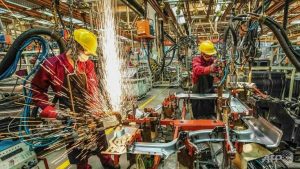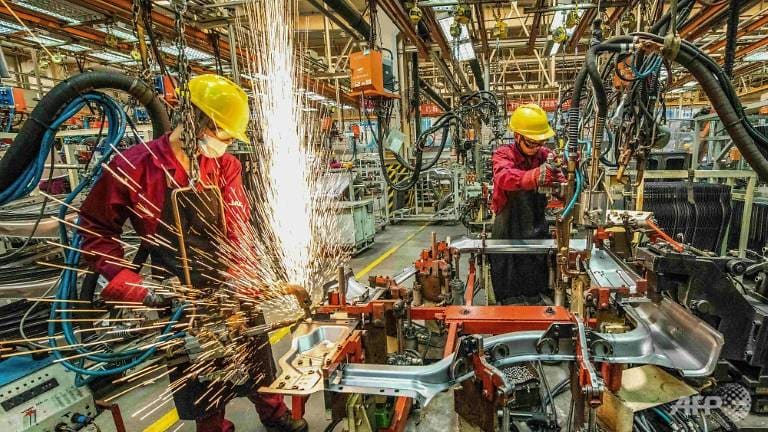
FILE PHOTO: Analysts forecast China will be the only major economy to experience positive growth this year.
BEIJING: China’s economy grew 3.2 per cent in the second quarter from a year earlier, data showed on Thursday (Jul 16), recovering from a record contraction as lockdown measures ended and policymakers stepped up stimulus to combat the shock from the coronavirus crisis.
The growth was faster than the 2.5 per cent forecast by analysts in a Reuters poll, and followed a steep 6.8 per cent slump in the first quarter, the first such contraction since at least 1992 when quarterly gross domestic product (GDP) records began.
The economy fell 1.6 per cent in the first six months from a year earlier, the National Bureau of Statistics said.
The world’s second-largest economy has been recovering slowly in the past two months, though the bounce from the pandemic-induced downturn has been uneven.
Some expect China to be the only major economy to see growth in 2020, as it was the first to be hit by the virus and likely first to bounce back.
The government has rolled out a raft of measures, including more fiscal spending, tax relief and cuts in lending rates and banks’ reserve requirements to revive the coronavirus-ravaged economy and support employment.
On a quarter-on-quarter basis, GDP rose 11.5 per cent in April to June, the bureau said, compared with expectations for a 9.6 per cent rise and a 9.8 per cent decline in the previous quarter.
While the economy is showing a steady recovery, a hard battle still lies ahead as the situation remains severe both at home and abroad, state radio quoted Premier Li Keqiang as saying on Monday.
Chinese President Xi Jinping said China’s long-term sound economic growth fundamentals will not change, the official Xinhua news agency reported on Thursday.
Xi made the remarks in a letter to global CEOs, the report said. It did not provide other details.
China’s industrial output rose 4.8 per cent in June from a year earlier, the data showed, quickening from a 4.4 per cent rise in May. That marked the third straight month of growth for the vast sector, offering some relief to the economy.
However, retail sales – a key indication of consumer sentiment – fell short of expectations, shrinking 1.8 per cent on-year.
The urban unemployment rate dipped to 5.7 per cent in June, from 5.9 per cent a month earlier.
The employment figure remains closely watched, with nearly nine million graduates expected to enter an uncertain labour market this year and analysts pointing out that actual unemployment is likely higher.
Tommy Wu, economist at Oxford Economics, noted in a report last month that the “survey-based unemployment rate substantially understates labour market stress as the measure excludes large numbers of unemployed (would-be) migrants”.



